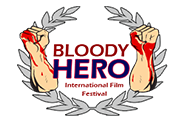Welcome to Jarbo State
The documentary portrays a story, about the residents in the district and through what happens in Järbo parish for a period of over three years. The film is told through three structural elements. Some ‘authentic Järboits’ as we follow more closely, a school’s fate where children thrive, but where tranquility is interrupted by the municipality because the implement of cuts. And how the tradition of moose unswervingly persist no matter what happens.
Beside the scenic Kroppefjäll in western Dalsland is Järbo parish. Like many places in Sweden’s rural, Järbo have been exposed to the threat of depopulation, by declining birth and shortage of jobs. But the residents of Järbo shows desire to preserve the ability to continue living in their beloved homeland.
Since the late 70′s century, this district passed under the name Järbo State, then there were some young patriotic seemed for local autonomy and independence. It began with a pronounced penchant for 50′s and great Americans and the celebration of their own national day. Even today it is accepted that the 349 inhabitants of Järbo, not are so easy to handle. What once was an expression of patriotism proved evidence of strenuous self-will and reluctance to follow the stream.
In the film we meet the main character, with the nickname The Count since his youth, who has lived in Järbo all his life. Today remains, a bachelor with ponytail intact and proud owners of his Chevrolet Impala -59. With his personality, he contributes to a natural component of Järbo and always to be reckoned with when it is something going on. On weekdays, he cares for out of the car, care of everything and everyone, but never say no thanks to a party.
We also meet the two brothers, Egon and Roland Gustafsson who live their quiet life where they start the day with morning coffee together, often with a visit from there neighbor The Count. They lives in their own houses and works occasionally together, when they are engaged as artisans, whenever anyone in the area needs help. They cherish their forests and land and takes no longer detour off Järbo. When it all about Järbo State started, they had a large part of ‘creating’ the State of Järbo, and even today they live by the motto that ”you can handle everything on your own”.
In an old abandoned school live Lucky-Ture with wife Karin. He has done many hours in the woods, both as woodsman and hunter, but he prefer remembering his adventures as a hunter. An episode makes him particularly well known in the district, and that was when he shot two elk with one shot. This story tells Lucky-Ture more than happy but there remain those who doubt the veracity. This cheerful older man always has time for a tour of the cottages and says every year that the next elk hunt will be his last. During the moose hunt, we follow him and his hunting companions during their hardships.
Maj Andersson former Jansson, is one other character, a real biker chick, rightly concerned about the district’s survival, cousin of The Count and daughter of Lucky-Ture and affectionate childhood friend of Egon and Roland. We follow when she marries her Jörgen, in ways which are not commonplace when the ceremony takes place at the old soldier’s cottage in the mountains and the entire wedding entourage partying on in the community center, Järbo Allhem.
The film also tells us the story about the school in Järbo where the teaching is in the B-form, ie multiple cohorts in the same class, since the 60′s. We get to know the kids, and together with their dedicated teachers, we meet the kids in situations where their self-confidence coupled with acceptance and curiosity is obvious. The children are happy about their school, as well as their parents once was going to Järbo school. But when the municipality decides to close the school, there grows a broad resistance.
Beyond the described characters we also meet many others of those who live in Järbo.
This film features several of the children’s parents and their bus driver, and we also get acquainted with local balloon club and given the chance to come to the dance floor in the middle of the forest.
We did investigating on our way to depict the little village with the great content. In some years, we follow events that reflect a contemporary Sweden that we may not have met before. There are still personalities and places worth paying attention to. We have had the chance to meet many of the residents in Järbo parish, but some of the main characters have the extra space, where we get an opportunity to feel the individuality found in Järbo. A threat, as the school closing, wakes up the question of what will happen to Järbo in the future. This drives the story forward, while we continue to get to follow developments in the seemingly mundane chores.
We want our way of telling create space for insight into a context and provide opportunities for reflection. The way we have cut, gives the viewer the story bit by bit. We have worked with the big issues as well as the small details. We have strived to maintain the authentic sound image obtained during recording as well as audio editing. Through the access, we as film crews received by participants in Järbo, can be one of the reasons the participants are so comfortable to the camera. We stayed in Järbo for a long time and have been able to get close and we were able to wait for special moments. This has given the opportunity for a get-together which still have not been characterized or influenced by the film crew were present.
Throughout the process we have put emphasis on that as the development of specially composed music to accompany the images without taking over.
- by admin
- posted at 6:35 am
- February 8, 2013
